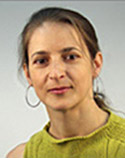Diana Baralle
Research FocusDiana Baralle is a Consultant in Clinical Genetics at the Princes Anne Hospital, Southampton and Honorary Senior Lecturer in Clincial and Molecular Genetics at the University of Southampton. Her particular interest is the role of splicing mutations in disease, phenotype penetrance and clinical diagnosis. Her group bridges clinical diagnostics and splicing mechanisms, exploiting human pathology to investigate new modulatory elements of splicing, previously unreported RNA-protein interactions and develop new systems to assess the effect on splicing of sequence variants found during molecular diagnostic testing. We have studied several mutations through the NF 1 gene that affected splicing through non-canonical mechanisms. In a specfic 5’ splice variant whose effect was uncertain we found a series of trans acting factors interfering with 5’ splice site recognition, making the 5’ss weaker than would appear by simple inspection of the sequence and in silico analysis. This was a clear example of why similar nucleotide substitutions can either be neutral or disruptive depending on genomic context and specific protein binding signatures. A second example of 5’ss definition altered by a different type of interaction (U1 independent pathway) is currently under study (NF1 exon 31). We have also analysed exonic mutations for their effect on splicing finding interesting subtle variations of exon definition even with synonymous changes. The impact of this type of variation on disease is harder to evaluate but it may provide an explanation for variable phenotypic penetrance of the same mutation in different individuals. We have also highlighted the importance of analysing deep intronic mutations for disease causing effects as in the case of NF1 intron 30 and undertook detailed mechanistic studies of pseudoexon creation focusing on the internal exonic elements that determine whether a newly created splice site will define a pseudo exon inclusion event or not. In this particular example we have found that PTB binding plays a significant role in marking the sequences as exons and the presence of binding sites prevents pseudoexoon inclusion after a natural mutation creates a new splice site while disruption of the binding site favors it. Publications
Key lab techniques: Minigene assays, RNAi, eukaryotic cell culture, sequencing, snp analysis. Lab contact: Dr Michela Raponi, at the Human Genetics Division address. |






